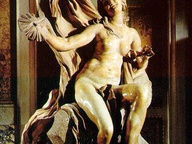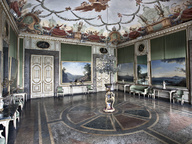Oneiros. Sebastiàn Matta between surrealism and technology
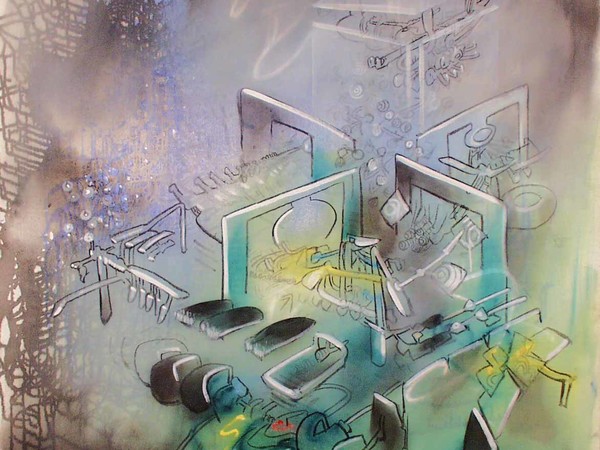
Roberto Sebastian Matta, Le grand inacheve, 1972, cm100x95,5
From 19 Novembre 2015 to 06 Febbraio 2016
Milan
Place: he Gallery Il Castello
Address: via Brera 16
Times: rom Tuesday to Saturday 11-19 | Monday 15-19
Responsibles: Adriano Conte, Marcello Conte
Telefono per informazioni: +39 02 862913
E-Mail info: info@ilcastelloarte.it
Official site: http://www.ilcastelloarte.it
On 19th November, The Gallery Il Castello in Milan of Roberto Sebastiàn Matta (1911-2002).
All works displayed in the gallery were created by Roberto Sebastiàn Matta between 50s and the beginning of the 21th century.
surrealist movement, which had a profoundly influence on his work.
The ‘human figure’, which is depicted in many paintings displayed in The Gallery Il Castello, appeared in Matta’s works for the very first time in 1942, during which he was improving his unique style, remarkably futuristic, hence, recognizable all over the world. His extraordinary style can be described as a combination of primitivism and a fascination with technology. References to psychological problems faced by the modern man, are very subtle and complex in the same time. In Matta’s works, the modern man, despite obstacles, is still looking into the future. All paintings displayed in The Gallery Il Castello perfectly capture an interesting aspect of the twentieth century - its multifaceted nature.
In 1992, the art historian Giuliano Briganti wrote, that Matta was convinced about one thing: "Art is something that should help you to become, not to be, somebody else, should push you to change yourself." The artist understands this need, our burning desire to change ourselves, but he or she doesn’t give us any ultimate answers how to do it, instead, raises questions, different kinds of questions, which each of us perceive differently.
Works of Sebastiàn Matta were displayed in most important museums in the world, from New York to Boston, from Berlin to Stockholm. In the early seventies, his paintings were a part of the traveling exhibition ‘For Chile’, which was an important answer of art for a occur of the dictatorship in his country of origin. When he was in his thirties, he was living in Paris, then he was living in Italy as well,, in Civitavecchia, where he died in 2002. Angela Madesani.
All works displayed in the gallery were created by Roberto Sebastiàn Matta between 50s and the beginning of the 21th century.
surrealist movement, which had a profoundly influence on his work.
The ‘human figure’, which is depicted in many paintings displayed in The Gallery Il Castello, appeared in Matta’s works for the very first time in 1942, during which he was improving his unique style, remarkably futuristic, hence, recognizable all over the world. His extraordinary style can be described as a combination of primitivism and a fascination with technology. References to psychological problems faced by the modern man, are very subtle and complex in the same time. In Matta’s works, the modern man, despite obstacles, is still looking into the future. All paintings displayed in The Gallery Il Castello perfectly capture an interesting aspect of the twentieth century - its multifaceted nature.
In 1992, the art historian Giuliano Briganti wrote, that Matta was convinced about one thing: "Art is something that should help you to become, not to be, somebody else, should push you to change yourself." The artist understands this need, our burning desire to change ourselves, but he or she doesn’t give us any ultimate answers how to do it, instead, raises questions, different kinds of questions, which each of us perceive differently.
Works of Sebastiàn Matta were displayed in most important museums in the world, from New York to Boston, from Berlin to Stockholm. In the early seventies, his paintings were a part of the traveling exhibition ‘For Chile’, which was an important answer of art for a occur of the dictatorship in his country of origin. When he was in his thirties, he was living in Paris, then he was living in Italy as well,, in Civitavecchia, where he died in 2002. Angela Madesani.
SCARICA IL COMUNICATO IN PDF
COMMENTI

-
 Dal 20 dicembre 2024 al 04 maggio 2025
Fermo | Palazzo dei Priori
Dal 20 dicembre 2024 al 04 maggio 2025
Fermo | Palazzo dei Priori
-
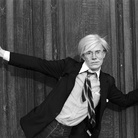 Dal 20 dicembre 2024 al 04 maggio 2024
Gorizia | Palazzo Attems Petzenstein
Dal 20 dicembre 2024 al 04 maggio 2024
Gorizia | Palazzo Attems Petzenstein
-
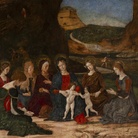 Dal 18 dicembre 2024 al 18 dicembre 2024
Venezia | Museo Correr
Dal 18 dicembre 2024 al 18 dicembre 2024
Venezia | Museo Correr
-
 Dal 14 dicembre 2024 al 02 marzo 2025
Palermo | Palazzo Abatellis
Dal 14 dicembre 2024 al 02 marzo 2025
Palermo | Palazzo Abatellis
-
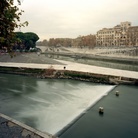 Dal 12 dicembre 2024 al 23 febbraio 2025
Roma | Palazzo Altemps
Dal 12 dicembre 2024 al 23 febbraio 2025
Roma | Palazzo Altemps
-
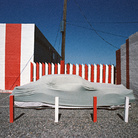 Dal 13 dicembre 2024 al 31 agosto 2025
Roma | Museo dell'Ara Pacis
Dal 13 dicembre 2024 al 31 agosto 2025
Roma | Museo dell'Ara Pacis

